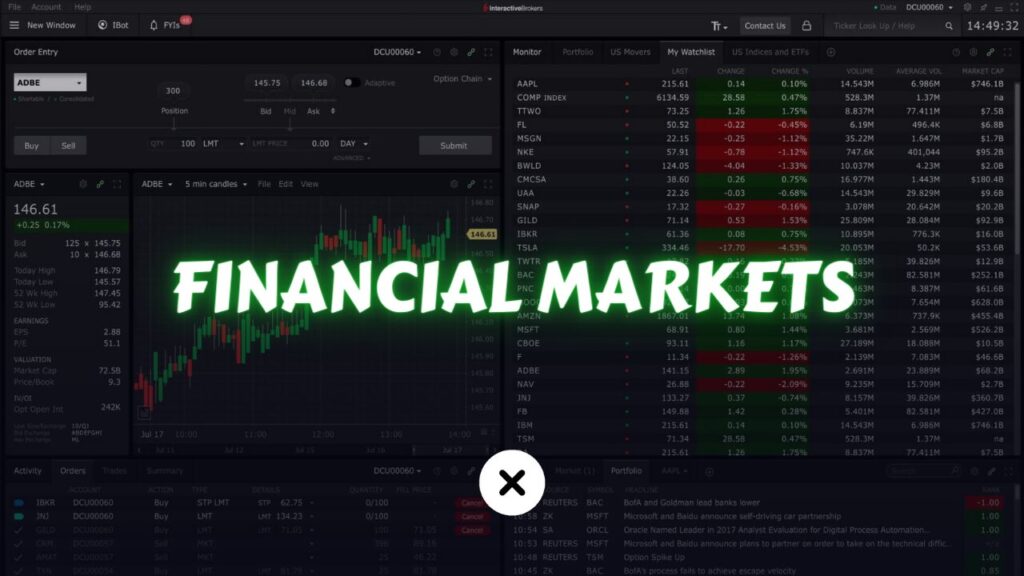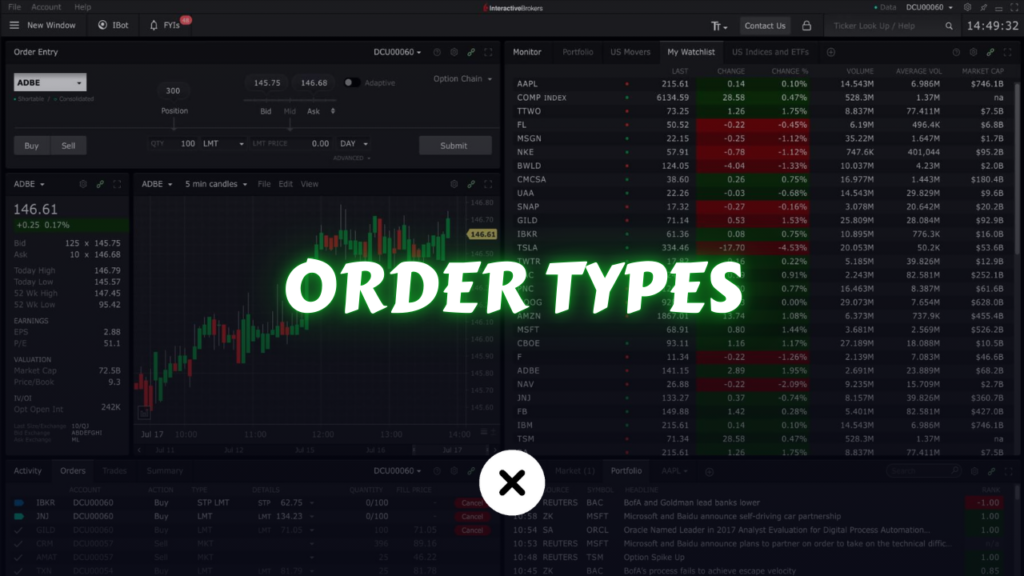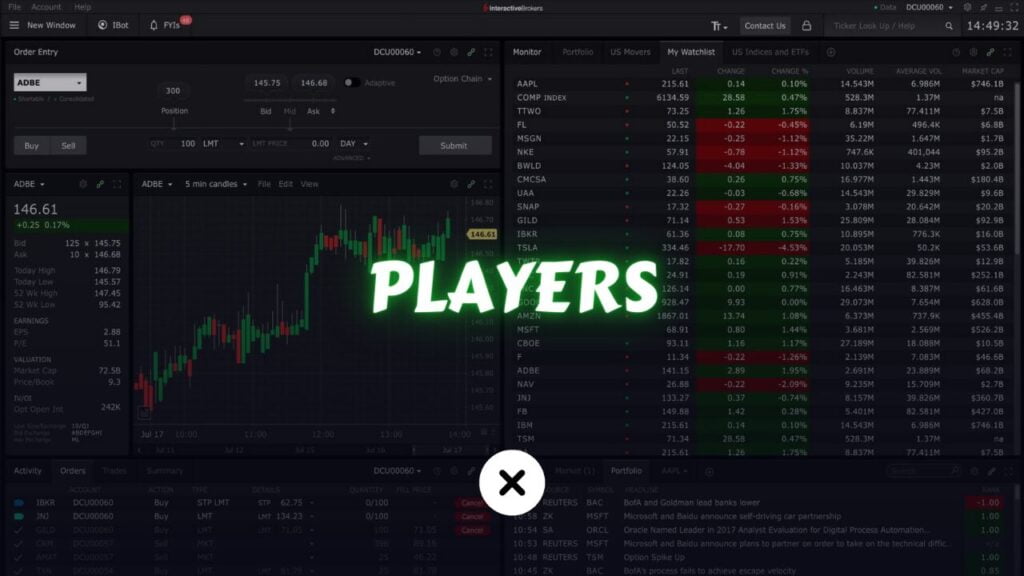Options trading stands as one of the oldest forms of financial speculation and risk management in history. While many people assume that complex derivatives are strictly modern inventions, the core idea of “buying the right, but not the obligation, to buy or sell an asset in the future” has been around for centuries—arguably millennia. From ancient civilizations engaging in early forms of contractual agreements to the rise of fully regulated modern exchanges, the concept of options has evolved in tandem with our expanding financial markets.
In this article, we will take a comprehensive journey through the history of options trading. We will start by defining options and discussing why this particular financial instrument is so vital. Then, we will walk through each significant period—from the earliest recorded references in Mesopotamia to the sophisticated, electronic-driven markets of the 21st century. Along the way, we will provide examples, highlight key developments, and explain how various historical milestones helped shape today’s modern options markets.
Whether you are a newcomer to the world of derivatives or a seasoned trader, understanding the historical roots of options trading can offer valuable insights into current practices and future trends. Moreover, comprehending how markets have evolved is essential to grasp the regulatory, technological, and strategic shifts that continually redefine this dynamic field.
Table of Contents
What Are Options? A Brief Overview

Before delving into the history, it is vital to understand precisely what we mean by “options”
- Definition of an Option: An option is a contract that grants the holder the right—but not the obligation—to buy (call option) or sell (put option) an underlying asset at a specified price (strike price) on or before a certain date (expiration).
- Call Options: Give the holder the right to buy an underlying asset at the strike price.
- Put Options: Give the holder the right to sell an underlying asset at the strike price.
Essentially, an option allows traders or investors to hedge risks, speculate on price movements, or employ complex strategies to manage their portfolio exposures. If you opt not to exercise your right, you lose only the premium you paid for acquiring the option contract.
Key Characteristics
- Leverage: Options can offer significant exposure to price movements of the underlying asset at a fraction of the cost compared to outright ownership.
- Limited Risk (for Buyers): An option buyer’s maximum loss is the premium paid.
- Flexibility: Options can be used in a variety of strategies, from hedging positions to speculative trading.
Historically, these core benefits—leverage, limited risk, and flexibility—have attracted participants from farmers in ancient times to global financial institutions today. Over centuries, the frameworks, regulations, and technologies have changed. However, the fundamental premise remains the same: securing a right, without an obligation, to ensure a more predictable future.
Early Foundations of Options Trading
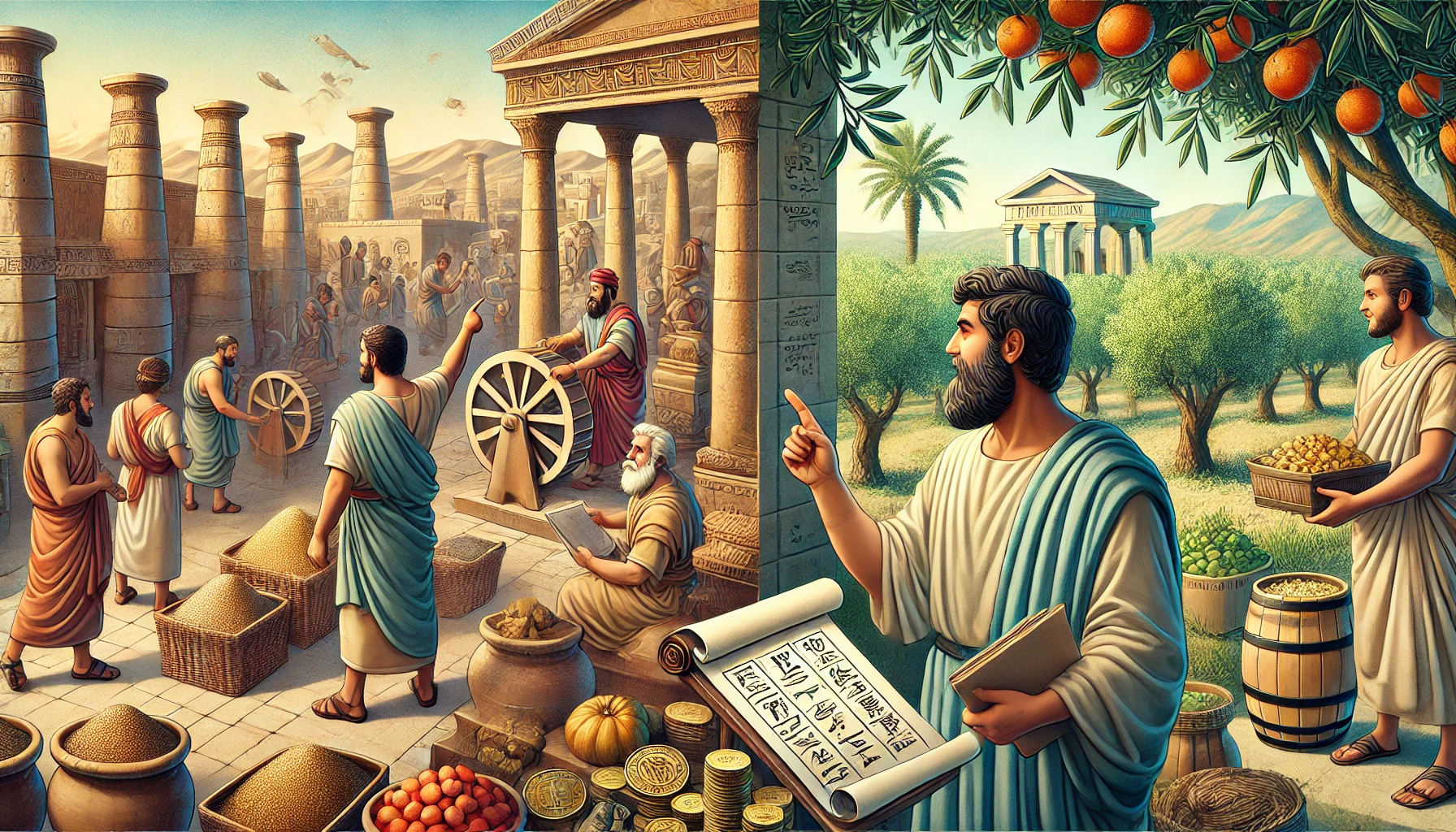
Ancient Mesopotamia and Agricultural Contracts
The seeds of options trading can be traced back to ancient Mesopotamia, one of the earliest cradles of civilization. Although exact documentary evidence remains sparse, historians and archaeologists have uncovered clay tablets and cuneiform inscriptions that detail complex commodity-based contracts. These agreements often involved granting a purchaser the right to buy agricultural produce (like grains) at a future date and price.
- Purpose: Mitigating risk associated with unpredictable harvests and price fluctuations.
- Mechanism: Early form of a forward or option, though not always clearly distinguished.
- Societal Context: In agrarian societies, controlling exposure to weather-induced crop failures was paramount. These contractual tools helped ensure price stability for both farmers and traders.
Although these early contracts might lack the rigorous structure of modern options, their core logic—that one party secures a future benefit at a pre-agreed rate—aligns fundamentally with today’s option mechanisms.
The Olive Presses of Ancient Greece
One of the most cited historical anecdotes related to options trading comes from ancient Greece, specifically involving the philosopher Thales of Miletus (circa 6th century BCE). The story, often told by Aristotle, illustrates how Thales used a type of option to secure profits from olive presses.
- Scenario: Thales anticipated a large olive harvest and paid a small deposit to secure exclusive rights to use olive presses.
- Contract Structure: The deposit functioned much like a premium on a call option—if the harvest was abundant, Thales would have the right to “exercise” his contract and utilize the presses or rent them out for a profit.
- Outcome: Indeed, the harvest was fruitful, and Thales made a considerable profit by subleasing the presses at a higher rate.
This example underscores how the concept of optional rights (with limited initial investment but the potential for large gains) existed well before organized financial markets. For Thales, the deposit he paid was at risk; if the harvest had been poor, he would have simply lost his initial payment. The logic is strikingly similar to buying a modern call option on an underlying asset.
The Middle Ages to the Renaissance
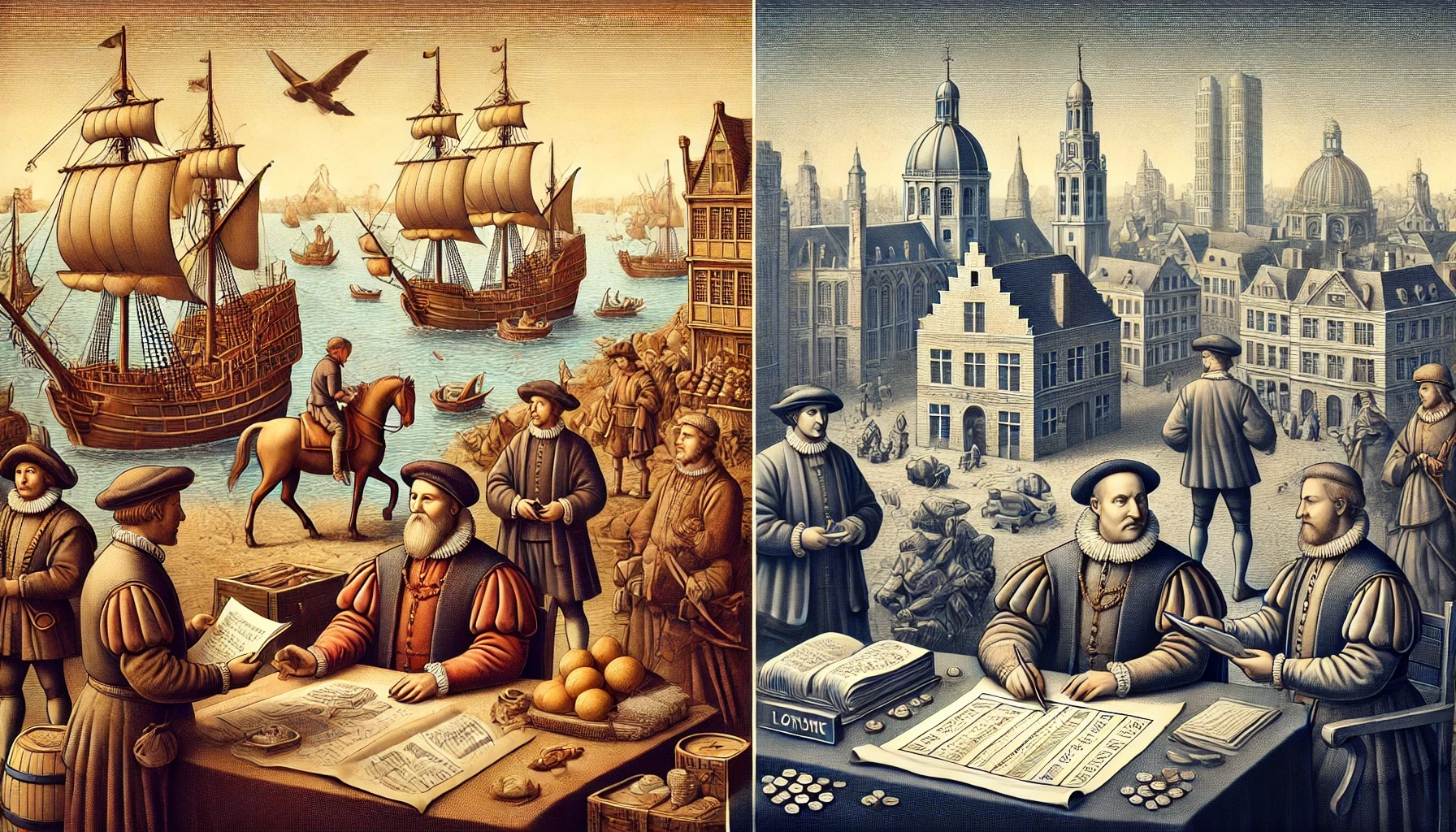
Merchants, Sea Routes, and Risk Mitigation
Throughout the Middle Ages, Europe’s maritime trade routes expanded significantly, connecting various regions through commerce in spices, textiles, metals, and more. Merchant guilds—often operating through city-states like Venice, Genoa, and later Amsterdam—developed sophisticated financial instruments to mitigate risks associated with long-distance trade.
- Maritime Insurance and Early Options: Insuring ships and cargo against piracy or storms was crucial. Some contracts included clauses that resemble modern-day options, where insurers (or counterparties) granted merchants the right to future compensation, depending on events.
- Letters of Credit and Forward Contracts: While these were not strictly options, they laid the groundwork for more advanced financial contracts by standardizing amounts, quality, and delivery timelines.
During this era, the primary focus was on the practicality of mitigating specific risks rather than creating a speculative market. The idea of an “option premium” was far less explicit. However, risk-sharing arrangements and derivatives-like mechanisms were blossoming.
Emergence of Futures and Forward-Like Contracts
Forward contracts—agreements to buy or sell a commodity at a predetermined price on a specified future date—were increasingly recognized during the Renaissance. Cities like Antwerp and Lyon saw the growth of financial centers where merchants would trade claims on commodities and exchange currencies ahead of time.
While options are distinct from forwards (because of the optionality aspect), the growing popularity of forwards set a stepping stone for the more flexible “right without obligation” concept. Traders realized they could pay a small premium for the privilege of backing out or adjusting if circumstances changed, thus planting the conceptual seeds for standardized options that would come centuries later.
The 17th and 18th Centuries

Tulip Mania and Early Speculative Bubbles
In the early 17th century, the Dutch Republic (modern-day Netherlands) experienced one of the first well-documented speculative bubbles in history: Tulip Mania (circa 1634-1637). While historians debate the extent of the speculation, it is widely cited as a cautionary example of market frenzy.
- Tulip Trading Mechanics: Contracts were often struck that gave buyers the right to purchase tulip bulbs at certain prices after a few months.
- Option-Like Elements: Some contracts allowed the buyer to forego taking delivery if they forfeited their initial payment. This mechanism effectively mirrored an option premium.
- Outcome: When prices plummeted, many were left with worthless contracts, showing both the power and the perils of speculative derivatives.
Tulip Mania underscores how the idea of paying for future rights (without obligation) can amplify market volatility, especially when combined with leverage and herd psychology.
London’s First “Stock” Exchange and Early Option-Like Deals
While the Dutch led innovations in commerce and finance, London also began to rise in prominence as a financial hub in the late 17th and 18th centuries. The Royal Exchange was established in 1565 by Sir Thomas Gresham, but by the early 1700s, stock trading and related financial contracts became more standardized.
- Royal Exchange and Jonathan’s Coffee House: Stockbrokers who were unwelcome at the Royal Exchange took their dealings to coffeehouses, notably Jonathan’s Coffee House.
- Option Clauses: Some private agreements included “refusal clauses,” resembling modern options where a party could refuse to finalize a deal under certain conditions.
During this period, the financial system was still largely unregulated, which fostered speculation but also left room for fraud and market manipulation. Nevertheless, these arrangements laid more of the groundwork for a formalized options market.
The 19th Century: Formalization of Options
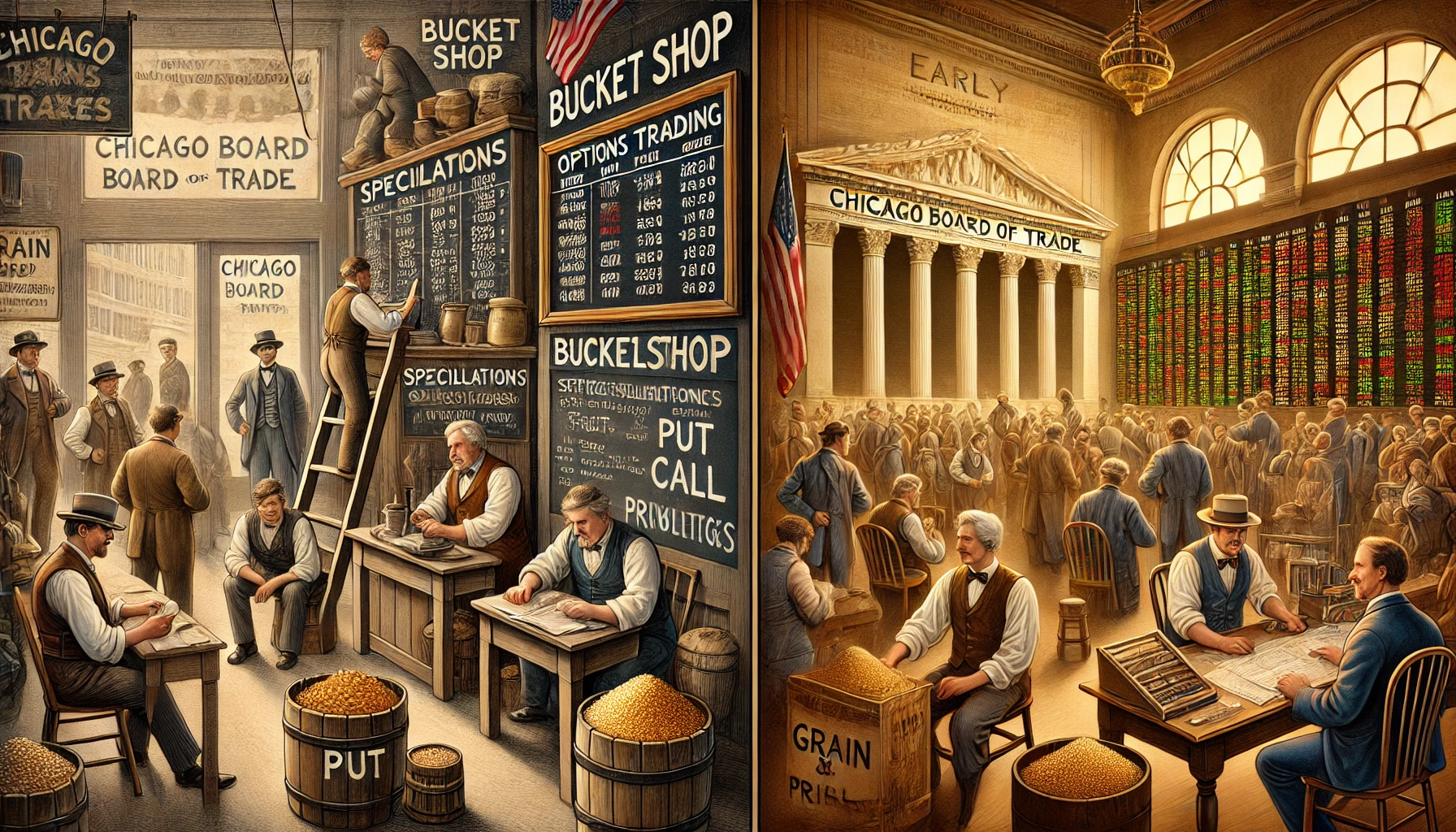
Bucket Shops and the Rise of Speculation
By the 19th century, especially in the United States, unregulated “bucket shops” sprang up. These were establishments that allowed speculators to place bets on stock price movements without actually taking ownership of shares.
- Operations: Bucket shops often offered bets or “contracts” that mimicked call and put options, but without proper underwriting or clearing.
- Speculative Nature: Traders could pay small margins or premiums to bet on price direction, akin to using options for speculative leverage.
- Regulatory Gaps: Because these shops weren’t officially recognized exchanges, they often faced legal challenges and public criticism for fostering gambling-like behavior.
Early American Markets
In the early to mid-1800s, major American cities like New York, Chicago, and Philadelphia became hubs for commodity and stock trading. The Chicago Board of Trade (CBOT) was formed in 1848 to standardize grain trading, focusing initially on futures contracts for commodities like wheat and corn.
Although the CBOT primarily dealt in futures, the concept of paying for “privileges” (a forerunner to options) began to gain traction among grain merchants. Over time, “put” and “call” privileges emerged, allowing buyers and sellers to mitigate some of the risks inherent in volatile agricultural markets.
- Privileged Pricing: Merchants would pay a small fee (premium) to secure the right to sell (put) or buy (call) grains at a set price in the future.
- Legal Status: Initially, these privileges were considered side-bets or handshake deals, but they slowly gained legitimacy and recognition as more merchants adopted them.
First Regulatory Scrutiny
As these privileges grew in popularity, so did concerns about speculative excess and potential manipulation. Governments and state legislatures in the United States began to scrutinize such contracts, sometimes labeling them as “bets” or “wagers.”
- Calls for Outlawing: Some jurisdictions attempted to outlaw or restrict options, citing their speculative nature.
- Industry Response: Brokers, merchants, and early exchanges defended the role of options in risk management, setting the stage for ongoing debates about derivative regulation that continue to this day.
The Early 20th Century

Organized Exchanges and Standardization
By the early 1900s, the concept of standardized futures contracts was well-established, particularly for agricultural commodities. Options were still mostly traded over-the-counter (OTC) with little official structure or regulatory oversight.
- Call and Put Options on Stocks: Stock options existed, but they were often offered via private deals between large investors or stockbrokers. Standardization was minimal, which limited market liquidity.
- Regional Exchanges: Various regional exchanges in the U.S. and Europe dabbled in specialized option contracts, but these attempts were sporadic and lacked the uniformity required to attract wide participation.
The Great Depression and Regulatory Reforms
The Wall Street Crash of 1929 and the ensuing Great Depression had a profound impact on financial regulation. In the United States, the government enacted legislation that changed how equities, bonds, and derivatives—including options—could be traded.
- Securities Act of 1933: Required companies to register securities and disclose financial information. While not specifically targeting options, it laid the groundwork for standardized disclosures.
- Securities Exchange Act of 1934: Created the Securities and Exchange Commission (SEC), which eventually shaped the environment for options trading by enforcing rules on exchanges and brokers.
During this era, many viewed derivatives, including options, with suspicion, equating them to speculation that contributed to market excesses. As a result, growth in options markets was limited. However, these reforms introduced a layer of oversight and investor protection that would enable a more structured options market to re-emerge in later decades.
Mid-20th Century: A Changing Landscape

Over-the-Counter (OTC) Options
Although large-scale public options trading was relatively dormant, the mid-20th century saw a small but notable OTC options market serving institutional investors, corporations, and high-net-worth individuals.
- Tailor-Made Contracts: OTC options allowed counterparties to customize terms such as strike prices, expiration dates, and underlying assets.
- Primary Users: Corporations using options to hedge currency or commodity exposure, institutional investors aiming for complex hedging strategies, and occasionally wealthy speculators.
The lack of standardization, however, hindered liquidity and price transparency. Contracts were negotiated on a case-by-case basis, meaning pricing could vary significantly, and there was always the risk of counterparty default if one side couldn’t fulfill the contract terms.
The Emergence of Institutional Players
As global trade expanded post-World War II, multinational corporations required sophisticated tools to manage foreign exchange risk, interest rate risk, and commodity risk. This demand led to slow but steady growth in the OTC derivatives market.
- Banks and Investment Houses: Major financial institutions like Goldman Sachs, Morgan Stanley, and large European banks started offering currency options and interest rate options to their clients.
- Foundations for the Future: Although invisible to the average investor, these developments paved the way for the more transparent and accessible options markets that would take shape in the 1970s and beyond.
Modern Options Trading: Post-1973

The Black-Scholes-Merton Model
A watershed moment in the history of options came in 1973, when economists Fischer Black, Myron Scholes, and later Robert Merton introduced the Black-Scholes-Merton (BSM) model for pricing European-style options. This mathematical framework revolutionized how market participants assessed option value by incorporating factors like the stock price, strike price, time to expiration, risk-free interest rate, and volatility.
- Key Insight: The concept of replicating an option payoff using a continuously adjusted portfolio of the underlying asset and a risk-free bond.
- Impact on Markets: Provided a theoretically robust, standardized method for evaluating options, fostering confidence among traders and institutions.
- Awards: Scholes and Merton received the 1997 Nobel Prize in Economics (Black had passed away, so he was ineligible).
The Black-Scholes-Merton model offered a quantifiable approach that led to explosive growth in options markets and set the stage for further sophisticated option pricing models.
The Birth of the Chicago Board Options Exchange (CBOE)
Also in 1973, the Chicago Board Options Exchange (CBOE) launched, becoming the first dedicated options exchange for standardized, exchange-listed options on individual stocks. This event marked the formalization of options trading in a regulated, exchange-driven environment.
- Standardized Contracts: Expiration dates, strike prices, and contract sizes were standardized, simplifying trading and clearing.
- Option Clearing Corporation (OCC): Established to clear and guarantee all listed option trades, greatly reducing counterparty risk.
- Volume Growth: Initial trading volume was modest, but as more investors recognized the benefits of listed options and gained confidence in the OCC’s clearing mechanism, volumes soared.
Standardization of Contracts and Options Clearing
Once the CBOE demonstrated the viability of standardized options, other exchanges soon followed. The Philadelphia Stock Exchange, American Stock Exchange, and others introduced their own options trading floors.
- Competition Among Exchanges: Drove innovation in contract types, expiration cycles, and listing of additional underlying stocks.
- Regulatory Support: The SEC oversaw these developments, maintaining rules aimed at ensuring fair trading practices and adequate disclosure.
During the 1970s and early 1980s, options on more stocks, indexes, and eventually ETFs were introduced. By the late 1980s and 1990s, traders had access to a wide range of options products, from equity options to index options and beyond.
Electronic Revolution and Global Expansion

Advent of Electronic Trading Platforms
The 1990s and early 2000s witnessed a technological revolution, drastically changing how options were traded. Electronic communication networks (ECNs), online brokerage accounts, and advanced trading software democratized market access.
- Online Brokers: Platforms like E*TRADE, Charles Schwab, and TD Ameritrade enabled retail investors to trade options at lower commissions, with user-friendly interfaces providing real-time quotes and analytics.
- Algorithmic Trading: Proprietary trading firms and hedge funds adopted automated trading strategies, employing sophisticated algorithms to exploit small pricing discrepancies.
- Increased Liquidity: With more participants came tighter bid-ask spreads, making options trading more efficient and attractive.
International Markets and Cross-Border Trading
As the American options market flourished, other global financial centers also started listing options on local stocks and indexes. Major exchanges in Europe (Euronext, Deutsche Börse, London Stock Exchange) and Asia (Hong Kong Stock Exchange, Japan Exchange Group) introduced standardized options.
- Growth of Index Options: Popular in Europe, where investors trade options on broad indexes like the Euro Stoxx 50, FTSE 100, or DAX.
- Global Risk Management: International businesses used currency options to hedge foreign exchange exposures, while commodity options gained traction among producers and consumers in emerging economies.
By the turn of the millennium, options were well on their way to becoming a truly global phenomenon, with near-24-hour coverage across the world’s major financial hubs.
Options Trading in the 21st Century

Popular Strategies and Market Participants
Modern options trading encompasses a vast array of participants—from pension funds and insurance companies aiming to hedge portfolios, to day traders and speculators seeking quick profits. Popular strategies include:
- Covered Calls: An investor owns the underlying stock and sells call options on it, generating income from the premium.
- Protective Puts: An investor buys put options on a stock they own, limiting downside risk.
- Straddles and Strangles: Traders bet on market volatility by buying both calls and puts.
- Spreads (Vertical, Horizontal, Diagonal): Employ buying and selling options with different strikes or expirations to refine risk/reward profiles.
Regulatory Environment and Innovations
Regulatory Bodies: The SEC in the U.S. and respective authorities worldwide continue to adapt regulations for the evolving derivatives market. They focus on market integrity, transparency, and adequate disclosures.
Innovations:
- Weekly and Daily Options: Exchanges launched short-duration options, appealing to traders who want more frequent opportunities.
- Mini Options: Contracts with smaller lot sizes (e.g., 10 shares instead of 100), aimed at making options accessible to smaller retail accounts.
- Binary Options: All-or-nothing payouts based on whether the underlying asset finishes above or below a certain price.
Emerging Technologies: AI, Algorithmic Trading, and More
Artificial Intelligence (AI) and Machine Learning algorithms are now deployed in options markets for tasks such as volatility forecasting, order execution optimization, and risk management.
- Big Data: Market participants analyze massive data sets, from social media sentiment to alternative data, to predict price moves.
- Robo-Advisors: Some robo-advisors offer automated options trading strategies or overlays, bringing once-complex derivatives to a broad retail audience.
- Cryptocurrency Derivatives: Bitcoin, Ethereum, and other digital assets now have options markets on various specialized exchanges, indicating how new underlying assets can spawn novel option products.
Conclusion: Looking Ahead
From ancient Mesopotamian agricultural contracts to the quantum-speed trading floors of modern financial markets, options have journeyed through epochs of innovation, speculation, and regulation. Each historical phase contributed an essential building block:
- Ancient Contracts: Established the concept of securing future rights without obligation.
- Tulip Mania and Early Stock Exchanges: Showed how speculation and mania could revolve around derivative-like instruments.
- 19th and Early 20th Centuries: Saw the push towards standardization and eventual regulatory oversight.
- Post-1973: The introduction of the Black-Scholes-Merton model and the founding of the CBOE launched a golden age of exchange-listed options.
- 21st Century: Technology, globalization, and innovation continue to reshape how options are traded, regulated, and utilized for hedging or speculation.
As the financial landscape evolves—whether through blockchain, AI-driven platforms, or new underlying assets—the fundamental attraction of options remains unchanged: the power to manage uncertainty with defined risk, while capturing the potential for significant reward.
Looking forward, we can expect the continued development of more specialized products, further global integration of options markets, and the integration of advanced technologies that push the boundaries of what is possible. What remains constant, though, is the enduring human desire to harness financial tools that allow us to mitigate risks, capitalize on opportunities, and speculate on the future.
Key Takeaways & FAQs
Key Takeaways
- Ancient Roots: Options-like contracts can be traced back to ancient Mesopotamia, and Thales of Miletus famously used a primitive call option on olive presses.
- Historical Evolution: Over centuries, these contracts evolved into forward-like structures in medieval trade, eventually paving the way for modern standardized options.
- Formal Exchanges: The 19th and early 20th centuries saw increased scrutiny and the beginnings of standardization, culminating in the establishment of formal options exchanges in the 1970s.
- Black-Scholes-Merton Breakthrough: The 1973 introduction of the BSM model revolutionized option pricing, ushering in an era of exponential market growth.
- Modern Markets: Today, options span global assets, from stocks to cryptocurrencies, with sophisticated strategies used by institutions and retail traders alike.
FAQs
1. Are options riskier than stocks?
Options can be riskier due to leverage, but they also allow for predefined maximum losses (for buyers). How risky they are depends on the strategy. A buyer of an option risks only the premium paid, whereas a seller can face theoretically unlimited losses if not hedged.
2. Why do options exist at all if they’re so speculative?
Options serve critical functions in hedging and risk management. Farmers, corporations, and investors use options to stabilize cash flows or portfolios against adverse price movements, reducing overall market risk.
3. What are some major factors that affect option pricing?
Key factors include the underlying asset price, strike price, time to expiration, volatility, and interest rates. The Black-Scholes-Merton model is a classic example of how these factors are integrated.
4. How have regulations impacted options trading historically?
Regulations typically aim to increase transparency, reduce fraud, and protect investors. While sometimes seen as restrictive, these rules have generally helped legitimate the market and foster greater public confidence.
5. Are newer financial instruments, like cryptocurrency options, fundamentally different?
While the underlying asset is different (e.g., Bitcoin instead of a stock), the mechanics of buying and selling calls and puts remain largely the same. The core principle—buying the right but not the obligation—applies regardless of whether the asset is a commodity, stock, or digital token.
6. Where is the options market heading in the future?
Expect more automation, more advanced analytics, and continual product innovation (e.g., new kinds of exotic options, expansions in crypto derivatives, etc.). As markets become increasingly interconnected, we are likely to see growth in cross-border trading and more uniform global regulations.
Final Thoughts
The story of options trading is a testament to human ingenuity in finance. Driven by necessity—whether to hedge risks in ancient agriculture or speculate on modern equities—options have stood the test of time. They’ve been shaped by some of the greatest minds in economics, propelled by technological revolutions, and guided by evolving regulatory frameworks.
Today, with global markets accessible at the click of a button, the future of options trading looks more vibrant and innovative than ever. Understanding how options emerged and adapted over centuries not only enriches our perspective but also equips us with the wisdom needed to navigate these instruments responsibly. In a world of uncertainty, the right to choose—without the obligation to follow through—remains one of the most powerful tools an investor or trader can wield.

